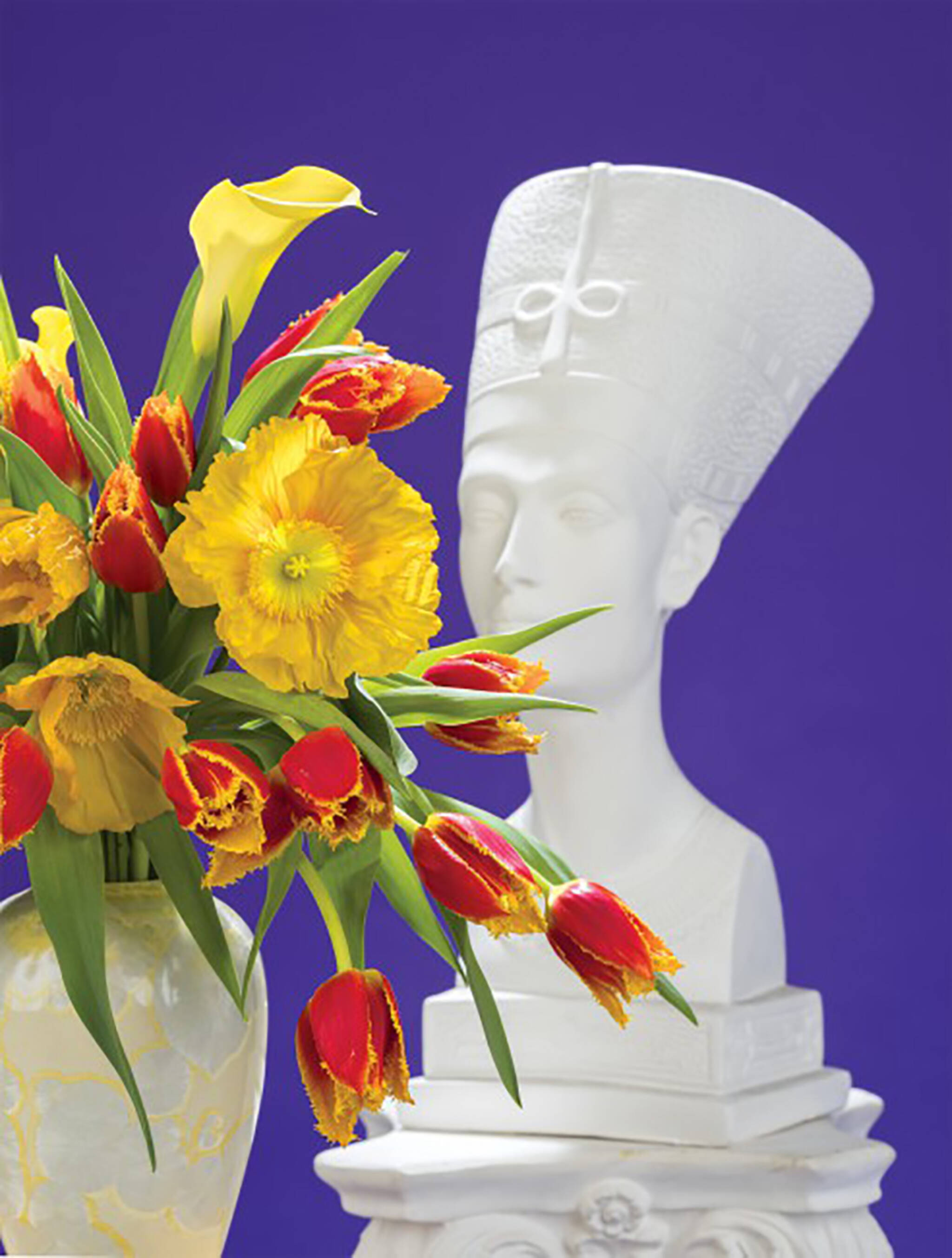
Say Less at Billboards on Lansdowne and Dundas W
Awol Erizku’s multimedia artistic practice draws attention to the lack of racial diversity and the profusion of cultural appropriation in Western art history.
Born in Ethiopia and raised in New York City’s South Bronx neighbourhood, Erizku’s longstanding awareness of Black invisibility and observation of whitewashing in art have deeply motivated his work. Reclaiming artifacts and iconographies to critique the museum and speak about Black cultural history and identity, he bridges the gap between “high art” and “the street” to question connotations of race and class.
Positioned on billboards in downtown Toronto and in eight cities across Canada, Erizku’s photographs upend still life traditions and visual marketing strategies. Simultaneously, they turn the tables on how African culture has been co-opted by Western art practices. His compositions incorporating sculptural pieces and found objects are punctuated by arrangements of flowers that recall the 17th-century European painting genre.
These images evolved from the artist’s first film, Serendipity (2015), where Erizku symbolically destroyed Michelangelo’s David and replaced it with a bust depicting the Egyptian queen Nefertiti. This gesture affirmed Erizku’s politics and merged his identity as an American artist with his African roots.
His still life compositions include black, white, or multicolour busts of Nefertiti, which underscore debates about her skin tone, as well as statuettes of King Tut, and a variety of wooden figurines whose colours contrast with various monochromatic backgrounds. These objects constitute recurring tropes in his work, and are frequently combined with sports paraphernalia such as the basketball hoop, which reflects Erizku’s personal experience of growing up on the Bronx court.
Currently based in Los Angeles, Erizku is the photographer behind Beyoncé’s iconic pregnancy announcement, which became the most Instagrammed image of all time. His still life images on billboards are ongoing declarations of African-American beauty and power. Foregrounding Black bodies, identity, and culture through photography, filmmaking, and music, he works beyond the gallery walls to “make blackness as universal as whiteness.”
Presented in partnership with the Museum of Contemporary Art Toronto Canada in conjunction with Awol Erizku’s work in the group exhibition BELIEVE from May 26 to August 12, 2018
Supported by PATTISON Outdoor Advertising